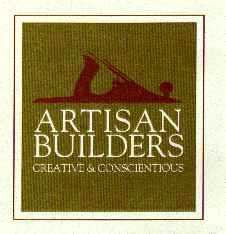Back at home, the office, or the Home Office, it is important to set aside time without disturbance to estimate the project at hand. Careful consideration of all the details is required. An interruption could change a decimal point and make the difference between profit or loss, or getting the job at all.
As many ways as there are to build a house, there could be methods and styles for estimating. Rooted so much in the imagination of the builder and what is translated from that first meeting, I believe the process is highly individual—not only to the person, but to the particular project as well.
Again, I assert I am no more expert at this than 30 years of stumbling and bumbling and a large portfolio of work can allow. Happily, the several workshops attended in that time seem to support my system (or the lack of The One). And, as always, I would be grateful for any and all feedback on the subject.

Depending on the size, sometimes I will start with a map of the project. Home-owner friendly CAD programs, or projects large enough to afford a design, may greet me with drawings, but generally, there is little to work from besides a few pictures, rough measurements, and a concept communicated with little detail (and lots of wishes) from the owner
The map I actually draw is less “what” but “how”. Microsoft Project, or any software that produces a timeline, a path of progress, helps to establish focus and orders the tasks ahead. It also adds veracity to the prediction of “how long?” that immediately follows the answer to “How much?” at the next meeting with the prospective client.
In the “old” days, we sat with pencil and calculator, scratching out guesses of how many sticks, stones and buckets of paint were needed, tossed in a number of weeks, months or days, slapped on a contingency, and with a handshake and a reassuring smile, said it would cost what it costs. Now, the plethora of programs is overwhelming, and as many as I have flirted with, I find I am a dog in Midlife who is still open to others, but keeps returning to modify my earliest tricks, reassured that they are flexible enough to accurately estimate as well as anything can.
Over the years, my Excel spreadsheet has grown from a simple three column tabulation to a five page monster that can track actual costs as well as estimate, comparing successes and red-lining potential failures along the way. It begins with a data sheet (no previous entry is ever deleted—unless discovered to be dismally wrong!), pre-loaded by experience, measured in square feet, running feet, by the hour, or by the ton.
Here, the bulk of the work is estimated, and the potential for a catastrophic mistake looms large. Typically, the whole process, no matter the method, is set up with phases and categories that match the actual steps of building: pre-construction, foundation, framing, mechanicals, finishes. To me, it has always worked best to estimate by herding all the trades and deliveries through my mind in the order that they might appear on the actual site. A good process wants to trigger all those details in the hope that nothing is forgotten.
Once the numbers are tabulated, the information should be packaged into a clear and legible format. Gone are the days of scribbled contracts on the back of a napkin (it did truly happen that way sometimes). Computers allow for no end of pages of drawings, estimates, verbiage of cautions, and references to previous projects and happy customers. A fairly clear line runs between professional presentations and overkill to sell a countertop replacement. No matter how discerning a prospect may be about quality, the dollar, in the end, usually dictates the decision. Accuracy above all is critical, because there are many jobs not worth taking, if items must be clear-cut to win the contract.
In the end, for a remodel especially, somehow it must be communicated to the owner that the estimate is not a science, but more a “magic trick” to see through walls and rely on carpenters who have sick kids and transportation problems. Here, a much finer line between creating fear and instilling confidence is harder to balance, keeping those extra rooms for wiggles and giggles designed into the contract for their addition.






